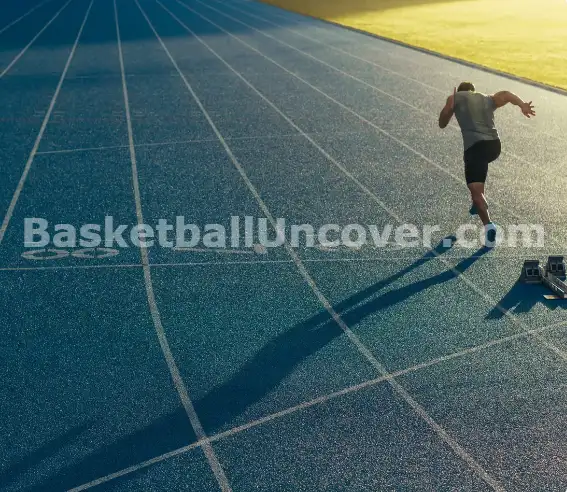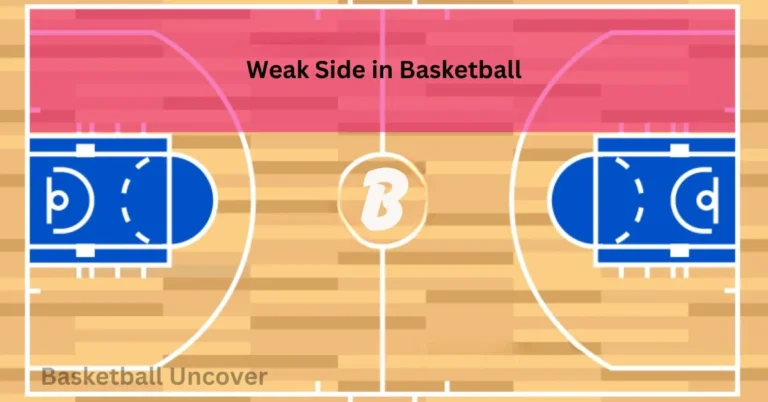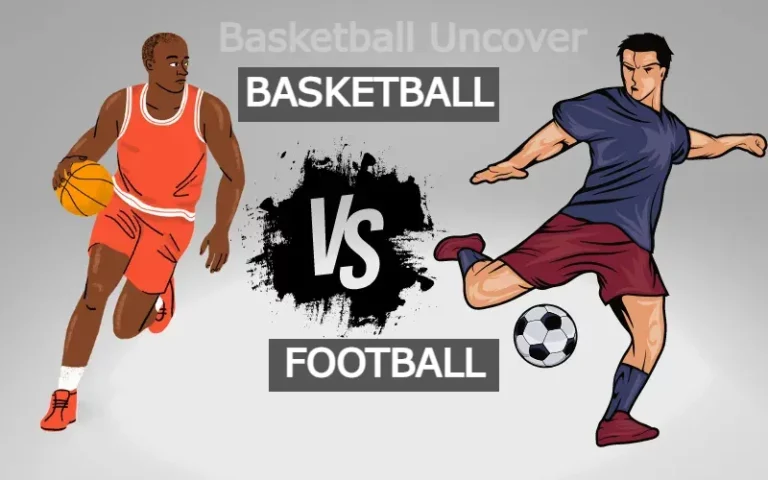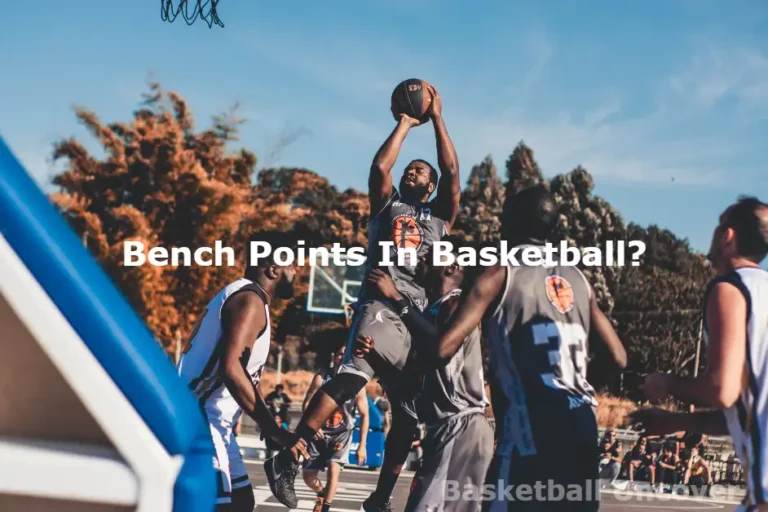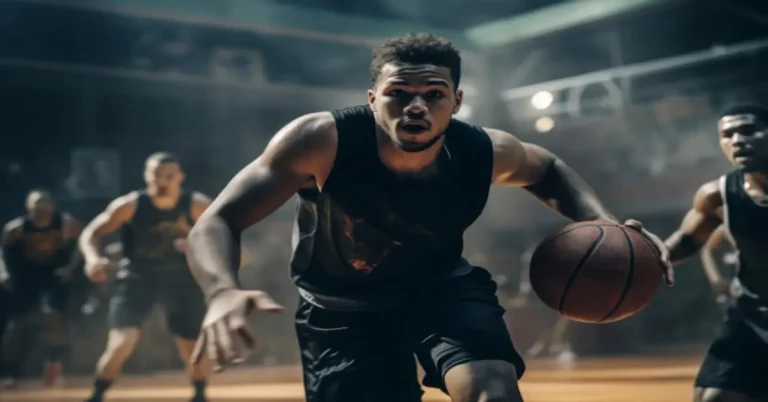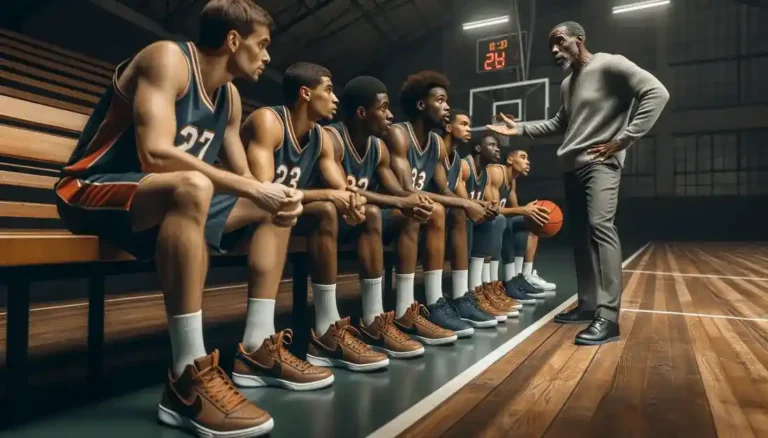How Many Laps in a Mile Around A Basketball Court?
Have you ever wondered how far you would run if you circled a basketball court? It’s a question that many fitness enthusiasts and basketball players alike ask themselves from time to time. Running around a basketball court is a great way to exercise, whether you’re a basketball player or not. But how many laps around a basketball court is a mile?
A standard basketball court is 84 feet long and 50 feet wide. This means that the perimeter of the court is 268 feet. If you run or walk around the court once, you will cover 268 feet.
How to Calculate the Number of Laps in a Mile
We’ll measure the perimeter in feet, so let’s also convert 1 mile into feet.
1 Mile = 5280 feet.
To calculate the laps around a court, divide the total feet in a mile by the perimeter.
Laps per mile = 5280/P or 5280/(2L+2W)
For our standard high school court, which has a length of 84 feet and a width of 50 feet, we can now plug the number in as such :
Laps per mile = 5280/(2×84 + 2×50)
= 5280/(168+100)
= 5280/268
Per Mile= 19.7 laps
You must run around the basketball court for approximately 19.7 Laps per mile.
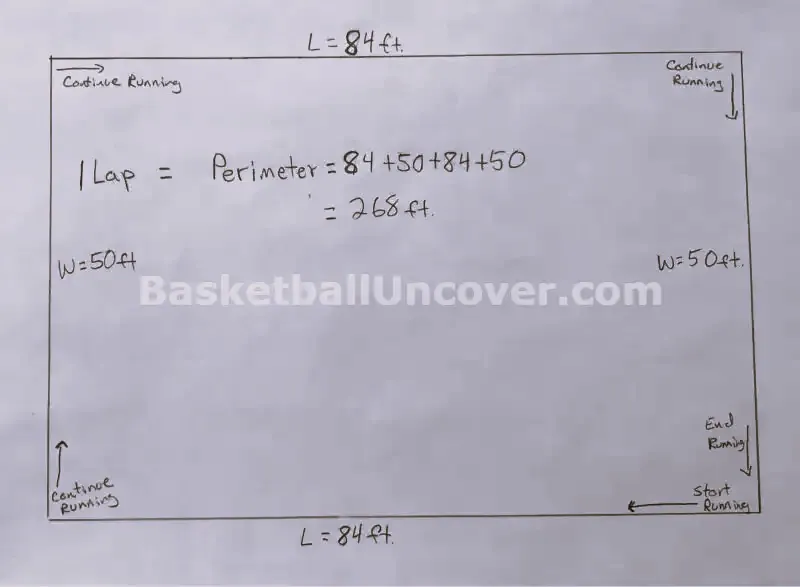
Read Also: Cost of Rental Court
Laps per Mile for other courts
Basketball courts vary for high school, college, NBA, FIBA, and more. Now, with a simple way to calculate laps per mile, let’s explore differences in other courts.
| Court Type | Length (ft.) | Width (ft.) | Laps per Mile |
| College/NBA | 94 | 50 | 18.33 |
| High School | 84 | 50 | 19.7 |
| Junior High School | 74 | 42 | 23.2 |
| FIBA/Olympic | 91.9 | 49.2 | 18.6 |
These tables show the sizes of different courts and how many laps you’d do in a mile.
College/NBA Courts:
Length (ft.): 94 | Width (ft.): 50 | Laps per Mile: 18.33
College and NBA courts are big, measuring 94 feet in length and 50 feet in width. The laps per mile, around 18.33, highlight how spacious these courts are. Players here face the challenge of covering this distance, showcasing the elite nature of this level of play.
High School Courts:
Length (ft.): 84 | Width (ft.): 50 | Laps per Mile: 19.7
High school courts, a bit smaller but just as intense, are 84 feet long and 50 feet wide. With around 19.7 laps per mile, players tackle a dynamic space that requires nearly 20 laps to cover a mile. These courts offer a distinctive challenge for players to refine their skills for higher competition levels.
Junior High School Courts:
Length (ft.): 74 | Width (ft.): 42 | Laps per Mile: 23.2
Junior high school courts suit younger players, with smaller dimensions at 74 feet long and 42 feet wide. Around 23.2 laps per mile highlight the challenge for young athletes to cover the distance. These courts foster skill development, preparing players for future transitions.
FIBA/Olympic Courts:
Length (ft.): 91.9 | Width (ft.): 49.2 | Laps per Mile: 18.6
FIBA and Olympic basketball courts follow global standards, providing a middle ground between college/NBA and high school dimensions. The 91.9 feet length and 49.2 feet’ width create the setting for elite global competitions. Around 18.6 laps per mile, players on this international stage deal with a challenging yet familiar distance.
Fastest NBA Players of All Time
NBA assesses speed annually at the combine, yet the emphasis is on the remarkable feats these players accomplish daily. Many of the fastest NBA players are also regarded as some of the greatest in the game.
Russell Westbrook
NBA Most Valuable Player award (2017): Westbrook’s explosive play and triple-double feats led him to the MVP award in the 2016-17 season, where he averaged 31.6 points, 10.7 rebounds, and 10.4 assists per game.
9 NBA All-Star selections (2011-2020, 2023): Westbrook’s consistently high level of play has earned him numerous All-Star nods, showcasing his impact on the game.
4 NBA All-NBA First Team selections (2016-2019): Westbrook’s dominance and leadership have been recognized by his inclusion in the All-NBA First Team on four occasions.
John Wall
NBA All-Rookie First Team (2010): Wall’s immediate impact on the league was evident as he earned a spot on the All-Rookie First Team in his debut season.
8 NBA All-Star selections (2011-2018, 2020): Wall’s electrifying style of play and All-Star calibre performances have earned him eight All-Star appearances throughout his career.
3 NBA All-Defensive Team selections (2014-2016): Wall’s defensive prowess and ability to disrupt opponents were recognized with three All-Defensive Team selections.
Michael Jordan
Six NBA championships (1991-1993, 1996-1998): Jordan’s leadership and legendary performances led the Chicago Bulls to six NBA championships, solidifying his status as one of the greatest players of all time.
Five NBA Most Valuable Player awards (1991, 1992, 1996, 1998, 1999): Jordan’s dominance and impact on the game were consistently recognized with five NBA MVP awards.
Ten NBA scoring titles (1987, 1988, 1990-1993, 1996-1998): Jordan’s exceptional scoring ability and relentless drive made him the league’s leading scorer for ten seasons.
14 NBA All-Star selections (1985-1993, 1996-1998, 2000-2003): Jordan’s All-Star appearances showcase his consistent excellence and popularity among fans throughout his career.
Nine NBA All-NBA First Team selections (1987-1993, 1996-1998, 2000-2003): Jordan’s elite level of play and impact on the game consistently earned him recognition on the All-NBA First Team.
Derrick Rose
NBA Rookie of the Year award (2011): Rose’s exceptional talent and immediate success led him to the Rookie of the Year award in his debut season.
NBA All-Star Game Most Valuable Player (2012): Rose’s standout performance and dominant play earned him the prestigious All-Star Game MVP award in 2012.
Two NBA All-Star selections (2012, 2015): Rose’s All-Star appearances demonstrate his ability to perform at the highest level and contribute to the All-Star spectacle.One NBA All-Defensive Team selection (2011): Rose’s defensive intensity and ability to disrupt opponents were recognized with a selection to the All-Defensive Team in 2011.
LeBron James
NBA championships (2012, 2013, 2016, 2020): James’ leadership, versatility, and ability to elevate his teammates have led him to four NBA championships with three different teams.
Four NBA Most Valuable Player awards (2009, 2010, 2012, 2013): Four NBA MVP awards have recognized James’ sustained excellence and impact on the game.
NBA Finals MVP awards (2012, 2013, 2016, 2020): James’ dominance in the NBA Finals has been evident as he has earned the Finals MVP award four times.
Four NBA scoring titles (2008, 2010, 2013, 2020)
FAQs
One lap around a standard basketball court is approximately 94 feet or 28.65 meters. Therefore, approximately 14 laps around a basketball court would equal 400 meters.
Approximately 63 laps around a standard high school basketball court would equal a mile. You would need about (1.5 \times 63 = 94.5) laps for a mile and a half.
High school gyms typically have a standard basketball court, which is 84 feet long. A mile is 5,280 feet, so 63 laps around a standard basketball court in a gym are equivalent to a mile.
A standard basketball court’s perimeter is approximately 28.65 meters, considering the outer boundary, straight sections along the sidelines and baselines, and curves around the free-throw and three-point lines.
Middle school basketball court, typically 74 feet long, can be calculated by dividing the total distance by the court length, with a lap count of approximately 71.35.
Conclusion
Explore the fitness benefits of running laps around a basketball court, covering 268 feet each. This workout is suitable for basketball enthusiasts and fitness seekers, providing an effective solution to achieve fitness goals. Wear sneakers for optimal results.

